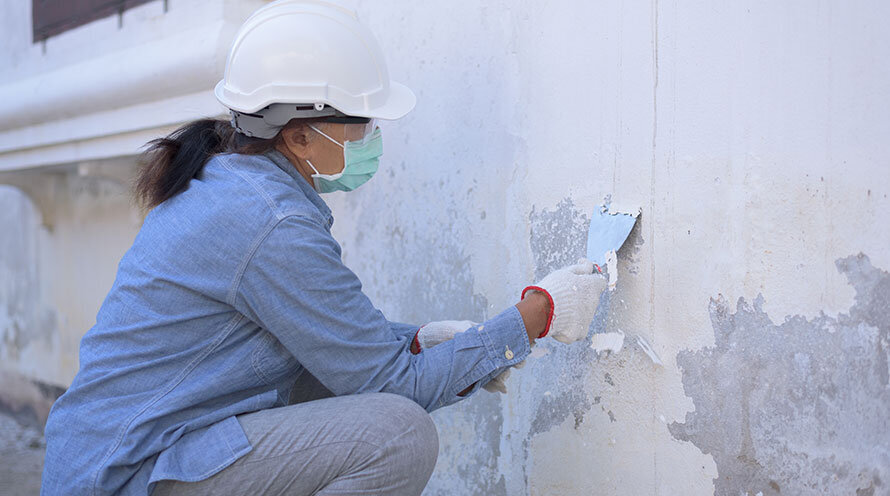
In early 2025, the Environmental Protection Agency (EPA) established new Dust Lead Action Levels (DLAL) and defined Dust Lead Reportable Levels (DLRL) for the first time. These changes replace the now defunct Dust Lead Clearance Standards (DLCS) and Dust Lead Hazard Standards (DLHS), that industry professionals have used for years.
While dispensing with these terminologies will be impactful, this change in nomenclature is inconsequential compared to the significant reduction in the now Dust Lead Action Levels (DLAL). Lead abatement firms must clear their lead abatements at 5 µg/ft² for floors, 40 µg/ft² for interior windowsills, and 100 µg/ft² for window troughs: a more than 50% reduction. Furthermore, the Dust Lead Reportable Level (DLRL) (formerly the Dust Lead Hazard Standard or DLHS) has also been reduced from 10 µg/ft² on floors and 100 µg/ft² for windowsills to ANY REPORTABLE LEVEL. Confused yet? Let me clarify.
The Health Dangers of Dust Lead
The EPA sets standards for dust lead levels for a fundamental reason: Lead is a heavy metal that can damage nearly every system in the human body. Even low exposure levels can have significant consequences, and it is particularly harmful to children, whose growing bodies absorb it more readily.
Children affected by lead exposure can experience developmental delays, learning disabilities, hearing problems, behavioral problems, and other issues. Lead can also affect adults, causing kidney damage, reproductive problems, nerve disorders, and cardiovascular problems.
So, the need for regulations is clear. It is also essential that everyone from home and building owners to lead abatement companies understands the standards as they exist at the time work is performed.
Tougher Lead Dust Standards
Under the new EPA lead dust rule, any detectable amount is considered a hazard. In regulatory terms, the DLHS has been replaced with the DLRL, meaning any reportable lead level qualifies as a lead-dust hazard.
Previously, the EPA’s hazard thresholds were numeric. For example, a floor dust lead level below 10 µg/ft² previously was not deemed a hazard. Now, no amount of lead dust is considered “safe” from a hazard standpoint. This change aligns with the EPA’s health research, which shows that even very low lead exposure can harm children.
In practice, if a dust wipe sample finds even a small trace of lead, it must be reported as a lead hazard. This means any lead dust in a home is a concern, as there is no longer a threshold below which the EPA says, “This amount of lead is acceptable.”
Changes to Post-Abatement Lead Dust Standards
Alongside the hazard definition change, the EPA has also dramatically tightened the allowable lead levels after an abatement. The DLAL refers to the dust lead concentrations that serve as the clearance criteria after abatement. They are now the new post-abatement clearance standards, and they have been markedly reduced to:
- 5 µg/ft² for floors
- 40 µg/ft² for windowsills
- 100 µg/ft² for window troughs
These new levels cut the prior DLCS in half for floors, by more than half for windowsills, and to one-quarter for window troughs. In other words, after a lead abatement project, the remaining dust must be below these levels for the abatement cleanup to be considered successful.
Recognizing the Decoupling of Standards
With the EPA’s lead dust standard changes, it is important to note the new relationship between them. The DLAL and DLRL have effectively been decoupled. Under the previous regulation, the hazard standard and clearance standard were the same number. If an abatement contractor cleaned below the hazard threshold, they were clear of hazards. Now, the hazard threshold DLRL is effectively zero, while the clearance levels (DLAL) are low but not zero.
This means it’s now possible to pass clearance (i.e., to be below DLAL) yet still technically have a hazard present, since any non-zero amount of lead is a hazard. For example, if a floor dust sample is 4 µg/ft² after abatement, it is under the DLAL, so the job passes clearance. However, 4 µg/ft² is not zero and thus represents a reportable hazard.
In practice, this scenario triggers additional steps like notifying residents, as abatement firms are now also required to educate clients that “passing clearance” doesn’t mean “no lead left.” Instead, it means lead is minimized to low levels, though trace amounts could remain. More on this later.
How the New Standards Affect Lead Abatement Companies (and Clients)
The establishment of these stricter dust lead levels will undoubtedly have a significant impact on the lead abatement industry. Contractors will need to substantially adjust their cleaning practices as achieving lead dust levels below 5 µg/ft² on floors and 40 µg/ft² on windowsills is a considerable challenge.
Post-abatement cleaning will have to be highly detailed, meaning abatement projects will take longer and require more cleaning passes, potentially increasing labor and costs. Abatement contractors will now have to plan for extra time and resources to meet the new clearance criteria, and property owners should be prepared for possible delays in their project completion.
Furthermore, since any detectable level of lead is considered a hazard, the sensitivity of dust wipe sampling and laboratory analysis becomes extremely important as different EPA-recognized labs have varying detection limits (the lowest amount they can reliably measure). Also, labs may have to modify their detection limit capabilities to ensure results are as precise as possible.
New Notification Requirements for Dust Lead Abatement Experts
In addition to the pragmatic changes that are now required of abatement contractors, there is also a paperwork/notification change to the EPA’s new rule. After a lead abatement project is completed, a report is usually prepared documenting the work and the results of clearance testing.
Under the updated regulations, every abatement report must now state that lead-based paint hazards might still remain if any lead dust was detected, even if the levels are below the DLAL. This requirement directly results from the decoupling of the hazard and clearance standards and serves as an important disclosure and educational measure.
For example, suppose an abatement contractor performs an abatement in a home, and the final dust wipe tests comes back as 3 µg/ft² on the floor and 20 µg/ft² on the windowsill. Both results are under the DLAL, so the abatement “passes” from a regulatory standpoint. However, the remaining concentrations of dust lead are above zero, meaning some lead dust remains.
The new rule requires that the post-abatement report acknowledges this seeming contradiction by explicitly stating, “The post-abatement dust lead levels are below the action levels. However, lead-based paint hazards still exist.” In essence, the client or resident reading the report should not be falsely lulled into thinking “below the clearance level” equals “no hazard at all.” Homeowners must be put on notice that any detectable amount of lead is a potential risk.
Caution Homeowners: The New Lead Dust Standards Are Enhanced but Not Universally Mandated
One final key point that bears emphasizing for both professionals and the public is that the EPA’s updated regulations do not mandate universal lead inspections or abatement in housing. The EPA doesn’t require owners of older homes to perform testing for lead dust or automatically mandating abatement if lead dust is identified.
As the EPA states, their lead-based paint rules “do not compel property owners or occupants to evaluate their property for LBP hazards or to take control actions.”. In essence, there is no new law saying every pre-1978 house must now be tested or cleared to the new DLRL or DLAL.
As a result of these new changes, the lead abatement industry will have to adapt to stricter standards. The EPA has made clear that these changes, while more demanding, are an absolute necessity as they aim to protect children’s health more effectively. In response, industry professionals must update their work protocols, invest in training for the new requirements, and communicate clearly with property owners about the latest standards, all of which underscores the need for meticulous work practices.
Questions About Lead Dust Abatement Services and Standards? Contact Us.
The EPA’s new lead dust standards can be confusing, and the safety of your family is something you should have full clarity about. If you have questions regarding the standards or our lead abatement services, contact us by calling 303-410-4941 in the Denver and Northern Colorado areas or 719-547-2785 in Colorado Springs, Pueblo, and Southern Colorado.
About Colorado Hazard Control
Colorado Hazard Control is the natural industrial, commercial and residential environmental solutions provider achieving the highest quality workmanship by focusing intensely on what we do best — health, safety, and environmental compliance. With locations in Denver, Colorado Springs and Pueblo, we offer our services statewide. Whatever your needs - lead abatement, mold remediation, radon mitigation, demolition, or training - we're there with 24-hour emergency response available. https://www.coloradohazard.com
Media Contact:
Lynnelle Beaver, 303-410-4941
Source: Prodigy.press
Release ID: 1432942






